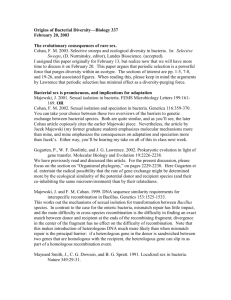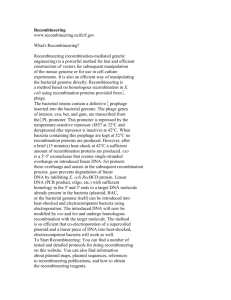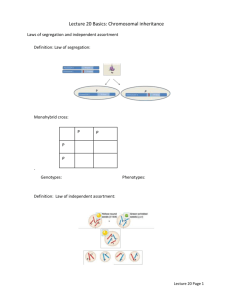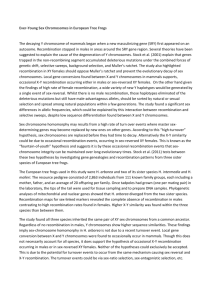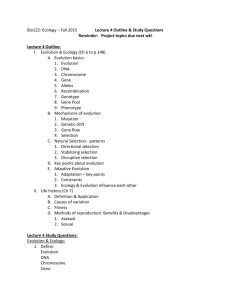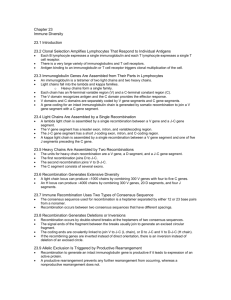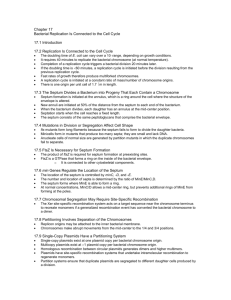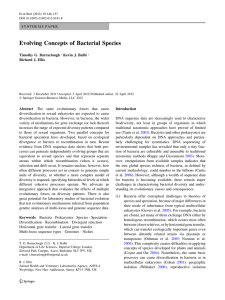Origins of Bacterial Species-
advertisement
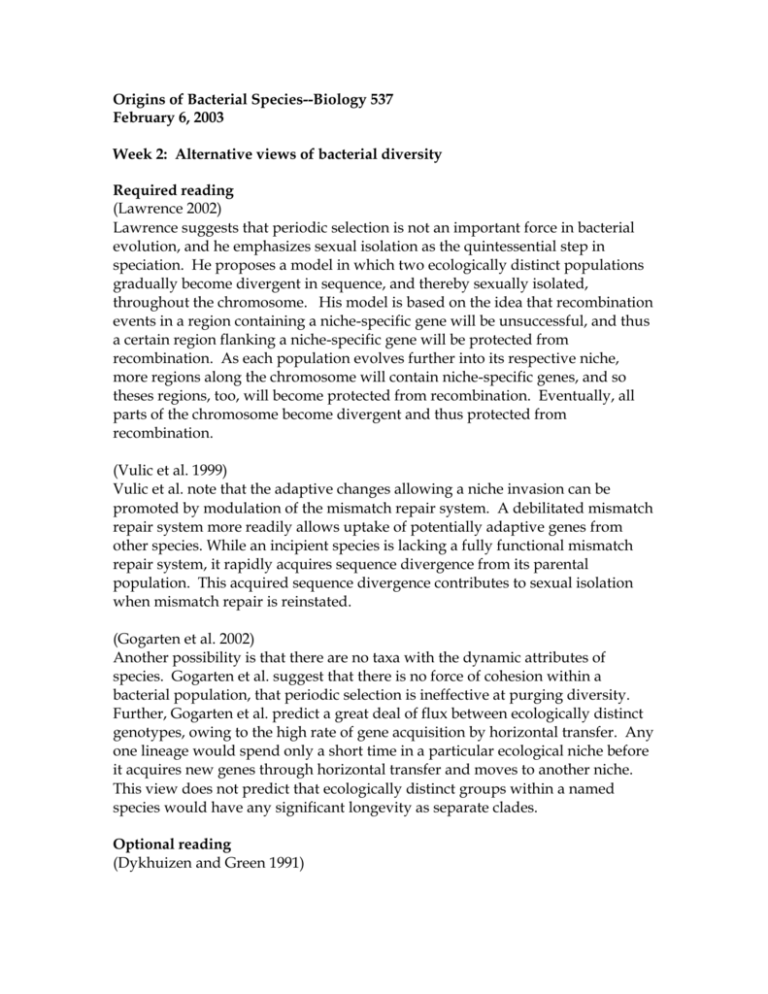
Origins of Bacterial Species--Biology 537 February 6, 2003 Week 2: Alternative views of bacterial diversity Required reading (Lawrence 2002) Lawrence suggests that periodic selection is not an important force in bacterial evolution, and he emphasizes sexual isolation as the quintessential step in speciation. He proposes a model in which two ecologically distinct populations gradually become divergent in sequence, and thereby sexually isolated, throughout the chromosome. His model is based on the idea that recombination events in a region containing a niche-specific gene will be unsuccessful, and thus a certain region flanking a niche-specific gene will be protected from recombination. As each population evolves further into its respective niche, more regions along the chromosome will contain niche-specific genes, and so theses regions, too, will become protected from recombination. Eventually, all parts of the chromosome become divergent and thus protected from recombination. (Vulic et al. 1999) Vulic et al. note that the adaptive changes allowing a niche invasion can be promoted by modulation of the mismatch repair system. A debilitated mismatch repair system more readily allows uptake of potentially adaptive genes from other species. While an incipient species is lacking a fully functional mismatch repair system, it rapidly acquires sequence divergence from its parental population. This acquired sequence divergence contributes to sexual isolation when mismatch repair is reinstated. (Gogarten et al. 2002) Another possibility is that there are no taxa with the dynamic attributes of species. Gogarten et al. suggest that there is no force of cohesion within a bacterial population, that periodic selection is ineffective at purging diversity. Further, Gogarten et al. predict a great deal of flux between ecologically distinct genotypes, owing to the high rate of gene acquisition by horizontal transfer. Any one lineage would spend only a short time in a particular ecological niche before it acquires new genes through horizontal transfer and moves to another niche. This view does not predict that ecologically distinct groups within a named species would have any significant longevity as separate clades. Optional reading (Dykhuizen and Green 1991) Dykhuizen and Green propose a way to bring bacterial within the fold of the Biological Species Concept, by proposing a phylogenetic approach toward identifying groups of strains that undergo recombination, and those that do not. References Dykhuizen, D. E., and L. Green. 1991. Recombination in Escherichia coli and the definition of biological species. J Bacteriol 173:7257-7268. Gogarten, J. P., W. F. Doolittle, and J. G. Lawrence. 2002. Prokaryotic evolution in light of gene transfer. Mol Biol Evol 19:2226-2238. Lawrence, J. G. 2002. Gene transfer in bacteria: speciation without species? Theor Popul Biol 61:449-460. Vulic, M., R. E. Lenski, and M. Radman. 1999. Mutation, recombination, and incipient speciation of bacteria in the laboratory. Proc Natl Acad Sci U S A 96:7348-7351.

